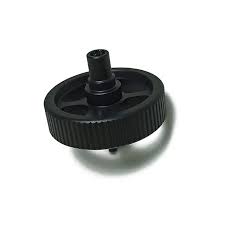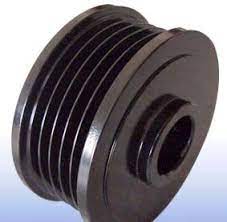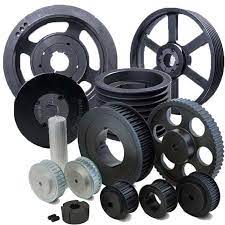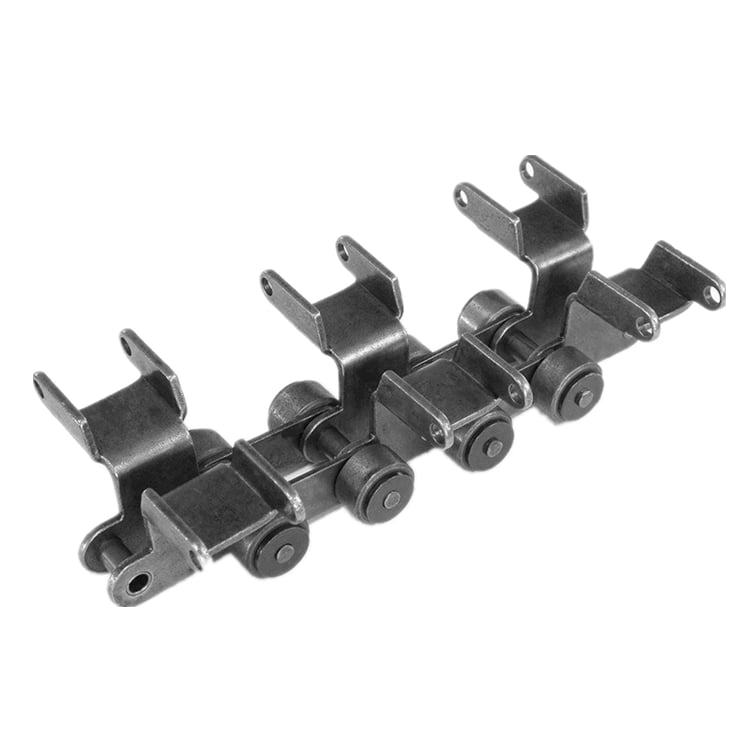Product Description
cnc turning 7075 anodized aluminum parts precision machining services
Product Description
1. Precision CNC machining parts strictly follow customers’ drawing, packing, and quality requirements.
2. Tolerance: between+/-0.01mm;
3. The high-tech CMM inspector to ensure the quality;
4. Full-Experienced engineers and well professional trained workers;
5. Fast delivery time;
6. Professional advice for our customers;
Detailed Photos
Product Parameters
Our advantage of cnc machining:
| Business Type | Beyond the Manufacturer and strong organized ability in the industrial |
| Benefits | 1. Deeper industrial experience at CNC machining parts service for more than 10-years,our customer’s requirement is our 1st priority. 2. 2D or 3D files is available; 3. We trust the quality priority and we insist the good quality should be based on the customers’ satisfied; 4. Without any MOQ requirement; 5.Faster delivery time; 6. Customized size and specification /OEM available 7. Near ZheJiang Port |
The material
| Materials Accept |
Stainless Steel | SS201, SS303, SS304, SS316 etc. |
| Steel | Q235, 20#, 45#, | |
| Brass | C36000 ( C26800), C37700 ( HPb59), C38500( HPb58), C27200(CuZn37) , C28000(CuZn40) | |
| Iron | 1213, 12L14,1215 etc. | |
| Bronze | C51000, C52100, C54400, etc. | |
| Aluminum | Al6061, Al6063,AL7075,AL5052 etc | |
| Plastic | ABS,POM,PC(Poly-Carbonate),PC+GF,PA(nylon),PA+GF, PMMA(acrylic)PEEK,PEI etc) |
Packaging & Shipping
- We prefer DHL or TNT express or other air freight between 1kg-100kg.
- we prefer sea freight more than 100kg or more than 1CBM
- As per customized specifications.
Company Profile
About us
HangZhou CHINAMFG Technology Co.,Ltd is located in HangZhou City, ZheJiang Province, Which closed the ZheJiang .The Emitech Technology is mainly engaged in the CNC Machinery Industrial Service for 15 years. Our Parts are sold to Europe, America, Japan, South Korea and China in various kinds of industrial.At present, Our company has CNC Turning machines and CNC centers and equip with professional quality and testing instruments.We have full OEM Experience from worldwide, providing them with One-stop solutions for a broad range of applications.We look CHINAMFG to cooperating with you!
Our Advantages
1. Precision CNC machining parts strictly follow customer’s drawing,packing and quality requirement.
2. Tolerance: between+/-0.01mm;
3. The high-tech CMM inspector to ensure the quality;
4. Full-Experienced engineers and well professional trained workers;
5. Fast delivery time;
6. Professional advice for our customers;
After Sales Service
Iso9001 certified CHINAMFG cnc parts
We usually provide 12 Months repair service. If our duty, we will respond to send the new parts.
Our Service
| Our Processing | CNC center, CNC milling, CNC turning, drilling, grinding, bending, stamping, tapping, |
| Surface finish | Polishing, sandblasting, Zinc-plated, nickel-plated, chrome-plated, silver-plated, gold-plated, imitation gold-plated, |
| Tolerance | 0.05mm~0.1mm |
| QC System | 100% inspection before shipment |
| Drawing format | CAD / PDF/ DWG/ IGS/ STEP |
| Packaging | Plastic bag/Standard package / Carton or Pallet / As per customized specifications |
| Payment Terms | 30 -50%T/T in advance, 70-50% balance before delivery; Pay Pal or Western Union is acceptable. |
| Trade terms | EXW, FOB, CIF, As per the customer’s request |
| Shipment Terms |
1)We prefer DHL or TNT express or other air freight between 1kg-100kg. 2) we prefer sea freight more than 100kg or more than 1CBM |
| Note | The CNC machining parts are usually custom-made based on the customer’s drawings and samples. So we need the Down Payment |
| After-sales Service: | Repaire |
|---|---|
| Warranty: | Half a Year |
| Condition: | New |
| Certification: | CE, RoHS, GS, ISO9001 |
| Standard: | DIN, ASTM, GOST, GB, JIS, ANSI |
| Customized: | Customized |
| Samples: |
US$ 10/Piece
1 Piece(Min.Order) | |
|---|
| Customization: |
Available
| Customized Request |
|---|

What maintenance procedures are necessary to ensure the reliability of spinning pulleys?
To ensure the reliability of spinning pulleys, certain maintenance procedures should be followed. These procedures help identify and address potential issues, prevent premature wear, and extend the lifespan of the pulleys. Here are some essential maintenance procedures:
1. Regular Inspection:
Periodic visual inspections of spinning pulleys are necessary to identify any signs of wear, damage, misalignment, or abnormal operating conditions. Inspections can help detect issues such as worn grooves, cracks, excessive belt wear, loose fasteners, or inadequate lubrication.
2. Lubrication:
Proper lubrication is crucial for the smooth operation of spinning pulleys. Lubricants reduce friction between the pulley and the belt, rope, or cable, minimizing wear and heat generation. The type and frequency of lubrication depend on the specific application and the manufacturer’s recommendations.
3. Belt Tension Adjustment:
Maintaining proper belt tension is important to prevent slippage and ensure efficient power transmission. Regularly checking and adjusting the belt tension according to the manufacturer’s guidelines or industry standards is essential. Improper tension can lead to reduced power transfer, accelerated wear, and decreased overall system performance.
4. Belt Cleaning:
Contaminants such as dust, dirt, or debris can accumulate on the pulley and the belt, affecting their performance. Regular cleaning of the pulleys and the belts with appropriate methods, such as brushing or compressed air, helps remove these contaminants and prevents their buildup.
5. Alignment Checks:
Spinning pulleys should be properly aligned to ensure smooth and efficient power transmission. Misalignment can cause increased stress on the pulleys, belts, and other power transmission components, leading to premature wear and potential system failures. Regular alignment checks using alignment tools or laser alignment systems help identify and correct misalignment issues.
6. Balancing:
Imbalanced spinning pulleys can result in vibration, which can adversely affect the overall system performance and lead to premature wear or failure of the pulleys and other components. Balancing procedures, such as adding balance weights or utilizing dynamic balancing equipment, can help minimize vibration and ensure smooth operation.
7. Repair or Replacement:
If any significant damage or wear is detected during inspections or maintenance procedures, appropriate repair or replacement actions should be taken promptly. This may involve repairing damaged pulley surfaces, replacing worn-out belts, or replacing the entire pulley if necessary.
8. Documentation and Record-Keeping:
Maintaining comprehensive records of maintenance activities, including inspection dates, lubrication schedules, adjustments, repairs, and replacements, is essential. These records help track the maintenance history of spinning pulleys, identify patterns or recurring issues, and facilitate proactive maintenance planning.
By following these maintenance procedures, the reliability and performance of spinning pulleys can be maximized, ensuring their optimal operation and contributing to the overall efficiency and longevity of the machinery or equipment they are a part of.

Can spinning pulleys be used in DIY projects and home improvement tasks?
Yes, spinning pulleys can be used effectively in DIY projects and home improvement tasks, offering versatility and functionality in various applications. Here are some examples of how spinning pulleys can be utilized in DIY projects and home improvement tasks:
1. Mechanical Systems:
– Garage Door Openers: Spinning pulleys can be used in DIY garage door opener systems to facilitate the smooth opening and closing of the garage door. They provide mechanical advantage and help transfer power from the motor to the lifting mechanism.
– Window Coverings: Pulleys can be incorporated into DIY window covering systems, such as Roman shades or vertical blinds, to enable easy and controlled adjustment of the window coverings.
2. Home Gym Equipment:
– Cable Machines: DIY cable machines, such as lat pulldown or cable crossover systems, can utilize spinning pulleys to provide resistance and enable a wide range of exercises for strength training.
– Weightlifting Racks: Spinning pulleys can be used in DIY weightlifting racks to facilitate the smooth movement of weight plates or cable attachments, allowing for various exercises.
3. Outdoor Projects:
– Pulley Systems: Spinning pulleys can be employed in DIY projects such as flagpole hoists, clothesline systems, or outdoor shade structures. They provide mechanical advantage and enable easy raising and lowering of objects or structures.
– Zip Lines: DIY zip line installations can utilize spinning pulleys to create a smooth and controlled ride along the zip line cable, enhancing the overall experience.
4. Garden and Landscaping:
– Irrigation Systems: DIY irrigation systems can incorporate spinning pulleys to drive pumps or control the movement of irrigation pipes, ensuring efficient watering of gardens or lawns.
– Trellis Systems: Spinning pulleys can be used in DIY trellis systems to facilitate the growth of climbing plants. They allow for easy adjustment of the plant support structure as the plants grow.
5. Furniture and Home Decor:
– Hanging Light Fixtures: Spinning pulleys can be incorporated into DIY hanging light fixtures to enable height adjustment and easy positioning of the lights.
– Sliding Doors: DIY sliding doors, such as barn doors or room dividers, can utilize spinning pulleys to guide the movement of the doors along a track, providing a smooth sliding motion.
These are just a few examples of how spinning pulleys can be used in DIY projects and home improvement tasks. The versatility and ease of integration make spinning pulleys a valuable component for those looking to add functionality and mechanical advantage to their DIY endeavors.

What types of belts or cables are typically employed with spinning pulleys?
Spinning pulleys are commonly used with various types of belts or cables, depending on the specific application and requirements. Here are some typical types:
1. V-Belts:
V-belts are a common choice for spinning pulleys in many applications. They have a trapezoidal cross-section and are designed to fit into V-shaped grooves on the pulley. V-belts provide reliable power transmission, high grip, and good flexibility, making them suitable for a wide range of speed and load conditions.
2. Timing Belts:
Timing belts, also known as synchronous belts, are used when precise synchronization of components is required. They feature teeth on the inner surface that mesh with corresponding grooves on the spinning pulley. Timing belts are commonly employed in applications such as engines, robotics, and precision machinery, where accurate positioning and timing are critical.
3. Flat Belts:
Flat belts are characterized by their flat, rectangular shape and are often made of materials such as rubber, polyurethane, or fabric. They rely on friction between the belt and the spinning pulley for power transmission. Flat belts are used in applications where high-speed operation, minimal vibration, and quiet operation are desired. They are commonly found in equipment such as textile machinery, printing presses, and packaging systems.
4. Serpentine Belts:
Serpentine belts are wide, flat belts with multiple ribs on the inner surface. They are commonly used in automotive engines to drive multiple components such as the alternator, power steering pump, water pump, and air conditioning compressor. Serpentine belts provide efficient power transmission and are designed to handle high loads and demanding conditions.
5. Wire Ropes or Cables:
In certain applications, spinning pulleys may be used with wire ropes or cables. Wire ropes are composed of multiple strands of wire twisted together to form a strong and flexible cable. They are commonly employed in lifting and hoisting equipment, cranes, and elevators, where high tensile strength and durability are required.
6. Chains:
Spinning pulleys can also be used with chains for power transmission. Chains consist of interconnected links that engage with sprockets on the spinning pulley. They are often used in heavy-duty applications, such as industrial machinery, agricultural equipment, and motorcycles, where high loads and robust operation are necessary.
The selection of the appropriate belt or cable depends on factors such as the power requirements, speed, load conditions, environmental factors, and specific application considerations. Manufacturers and engineers consider these factors to choose the most suitable belt or cable type for optimal performance and longevity in conjunction with spinning pulleys.


editor by CX
2023-11-08




